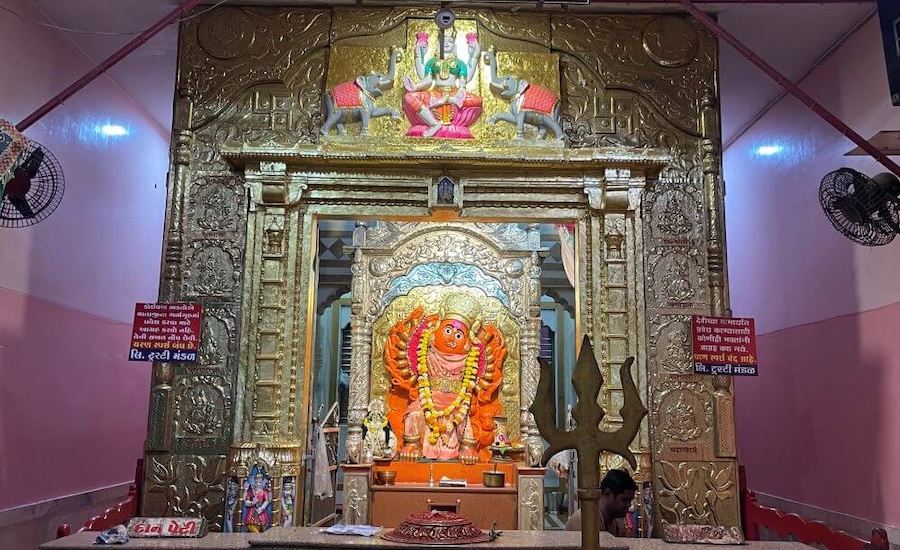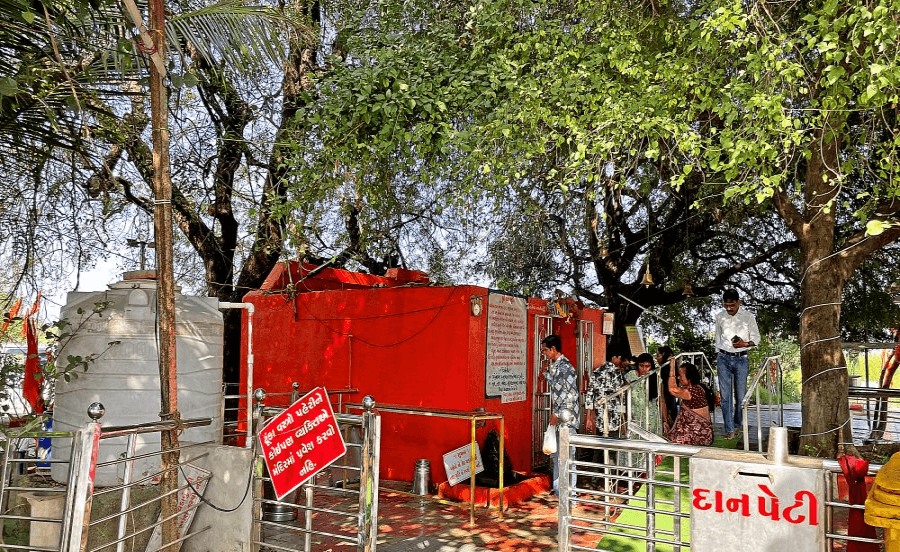
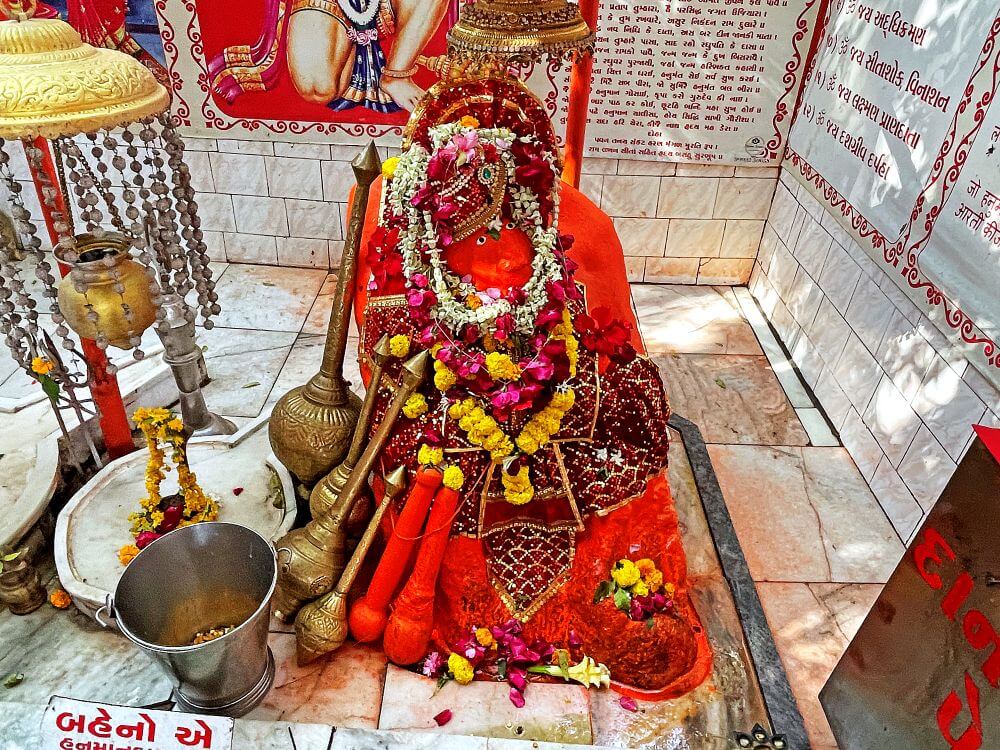 Similar to the famous Shani temple in Shani Shingnapur, Maharashtra, the Jalebi Hanuman Temple in Mangrol village, Surat district, is a unique shrine without a roof. This 200-year-old temple is believed to fulfil devotees’ wishes if they offer jalebi (a sweet delicacy) to Lord Hanuman. Nestled under the shade of neem, tamarind, and bael trees, this temple is named Jalebi Hanuman Dada. Interestingly, unlike many Hanuman temples, which feature one Shivlinga, this temple has two. Devotees visit this sacred site to seek blessings for children, marriages, and even foreign travel.
Similar to the famous Shani temple in Shani Shingnapur, Maharashtra, the Jalebi Hanuman Temple in Mangrol village, Surat district, is a unique shrine without a roof. This 200-year-old temple is believed to fulfil devotees’ wishes if they offer jalebi (a sweet delicacy) to Lord Hanuman. Nestled under the shade of neem, tamarind, and bael trees, this temple is named Jalebi Hanuman Dada. Interestingly, unlike many Hanuman temples, which feature one Shivlinga, this temple has two. Devotees visit this sacred site to seek blessings for children, marriages, and even foreign travel.
According to legend, during the rule of the Gaekwad dynasty, Mangrol was known as Bandhari-Mangrol and later came to be called Mota Mia Mangrol. A local villager named Patel had a vision of Lord Hanuman in his dream, instructing him to uncover the deity’s idol in his field and establish it.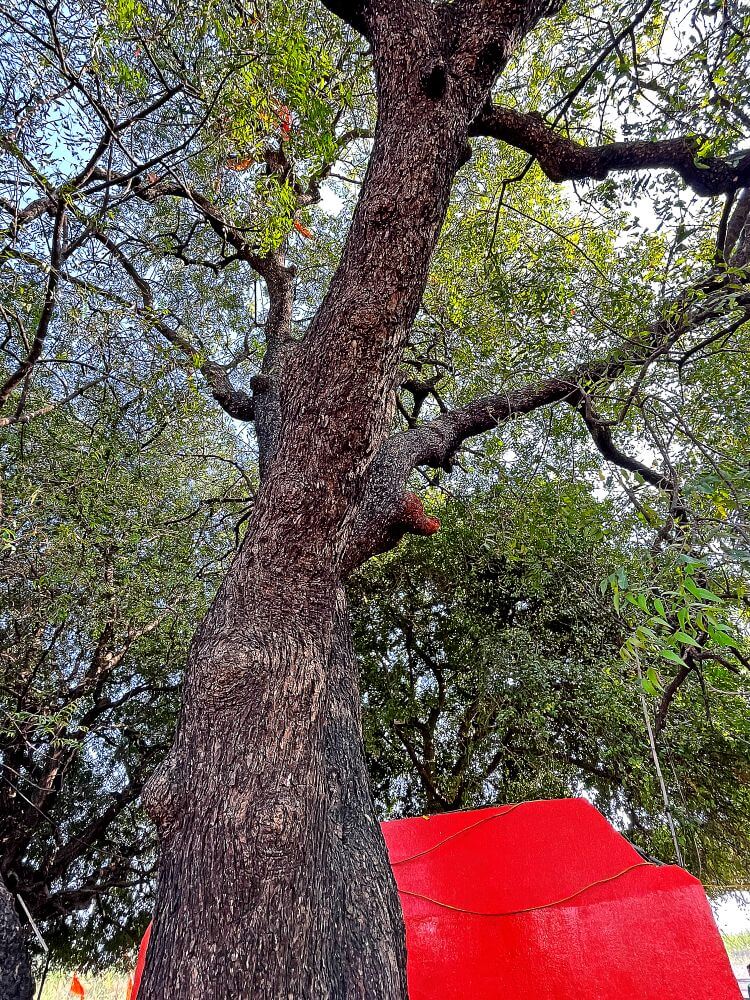 Upon digging in his field, Patel found a self-manifested (Swayambhu) idol of Lord Hanuman. Attempts to transport the idol on a bullock cart to the village always ended with the cart breaking down at a specific spot near the river. Ultimately, the villagers established the idol at that exact location, which is now the temple.
Upon digging in his field, Patel found a self-manifested (Swayambhu) idol of Lord Hanuman. Attempts to transport the idol on a bullock cart to the village always ended with the cart breaking down at a specific spot near the river. Ultimately, the villagers established the idol at that exact location, which is now the temple.
The temple remains without a roof due to an intriguing series of events. In the 1990s, the Pathak family from this village attempted to construct a roof over the temple. However, every effort ended in failure, with the roof collapsing repeatedly. Once, even a sheet metal roof was blown one kilometre away despite calm weather. After these incidents, no further attempts were made to construct a roof. The temple’s location beneath the neem tree earned it the name Neem Wale Hanuman Dada (Hanuman under the Neem Tree). Over time, as devotees began offering jalebi as a sweet offering, the temple became popularly known as Jalebi Hanuman Dada.
Situated amidst nature, the temple is surrounded by shops selling jalebi and other worship items. The temple courtyard is paved, and a shaded pathway leads to the shrine. The temple walls are painted in bright saffron, and neem, tamarind, and bael trees add to the sanctity. A stone idol of Shani (Saturn) is enshrined outside the temple, a common 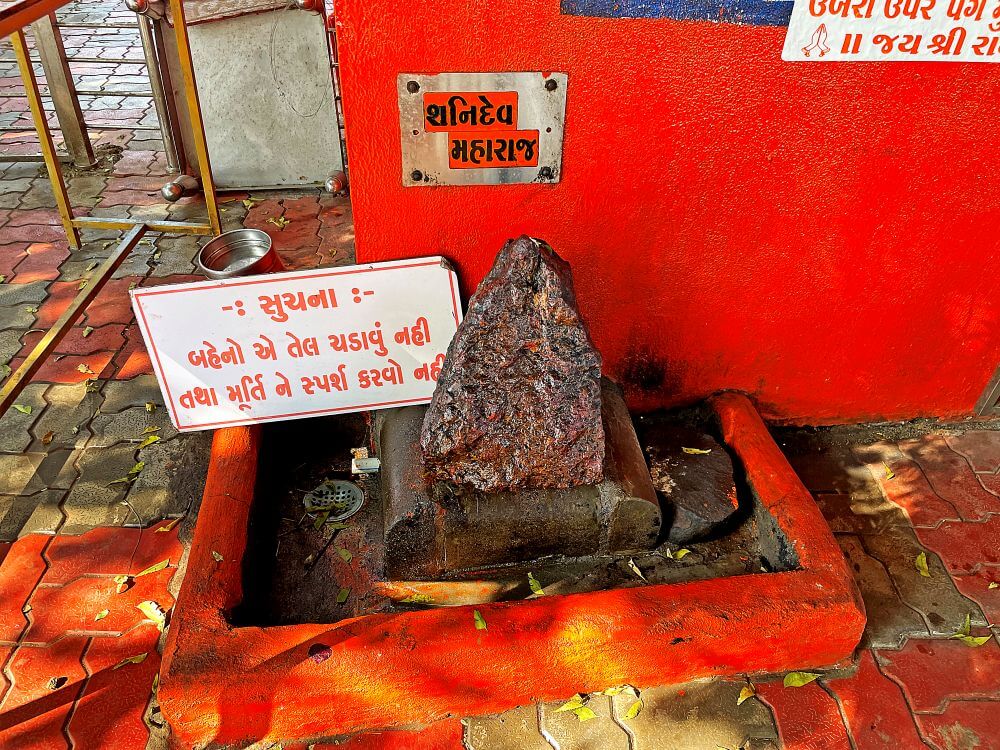 feature in many Hanuman temples. Inside, the walls are adorned with depictions of the twelve Jyotirlingas, Lord Shiva with Parvati and Ganesh, Lord Satyanarayan, and Hanuman. Plaques inscribed with Hanuman Stotra and Hanuman Chalisa are also displayed.
feature in many Hanuman temples. Inside, the walls are adorned with depictions of the twelve Jyotirlingas, Lord Shiva with Parvati and Ganesh, Lord Satyanarayan, and Hanuman. Plaques inscribed with Hanuman Stotra and Hanuman Chalisa are also displayed.
The shrine features a sindoor-smeared idol of Hanuman Dada, slightly tilted, as it is believed to have fallen from the bullock cart in this position. Next to the idol are several brass and stone maces (gada), as well as two Shivlingas.
The temple has some fascinating natural formations, adding to its mystical aura. Adjacent to the temple is a neem tree surrounded by a fenced enclosure. Devotees believe that 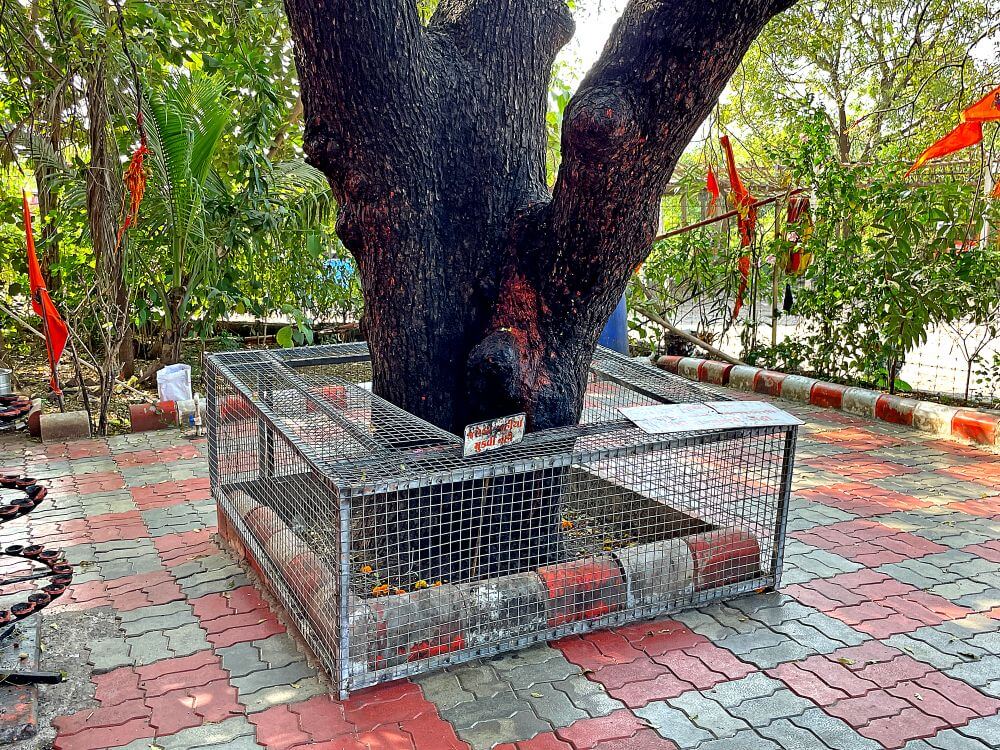 the hump on tree’s trunk resembles Nandi (the bull, vehicle of Lord Shiva) and a turtle. Additionally, one branch is said to depict the sleeping form of a young Hanuman, resting with his head on his folded arm. The absence of Nandi and a turtle idol in the temple is attributed to these natural manifestations.
the hump on tree’s trunk resembles Nandi (the bull, vehicle of Lord Shiva) and a turtle. Additionally, one branch is said to depict the sleeping form of a young Hanuman, resting with his head on his folded arm. The absence of Nandi and a turtle idol in the temple is attributed to these natural manifestations.
Jalebi Hanuman Dada is revered as a wish-granting deity. Similar to the Visa Hanuman in Adalaj (Prabha Hanuman) and Chamatkarik Hanuman in Khadia, Jalebi Hanuman Dada is believed to help devotees resolve issues related to obtaining visas. Devotees also pray here for recovery from illnesses like cancer, successful marriages, and children. A common practice involves observing fasts for three, five, seven, or eleven Saturdays and offering jalebi as prasad after their wishes are fulfilled.
Every Saturday, the temple sees around 4,000 devotees, and the numbers swell significantly during the month of Shravan. A havan kund (sacred fire pit) in the temple courtyard is used for havan rituals conducted every Saturday. A nearby hall hosts a communal meal (bhandara) from 10 AM to 2 PM for devotees.
The temple is particularly crowded during the month of Shravan and on Saturdays. The serene environment and the promise of fulfilled wishes make it a significant spiritual destination.
